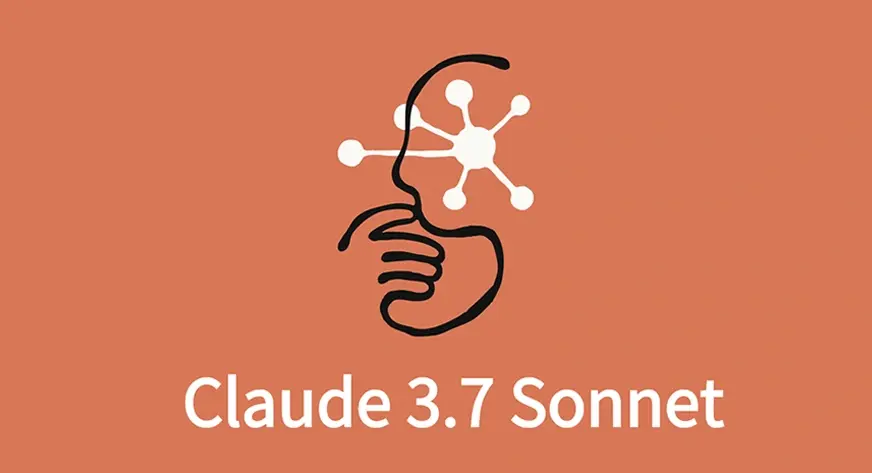How to Use Claude 3.7 Sonnet
Anthropic’s release of Claude 3.7 Sonnet marks a significant advancement in AI model capabilities, offering developers a versatile tool for integrating sophisticated reasoning and coding functionalities into their applications. This article explores how to effectively utilize Claude 3.7 Sonnet, highlighting its features, integration methods, best practices, and real-world applications.

What is Claude 3.7 Sonnet?
A Hybrid Reasoning Model
Claude 3.7 Sonnet is Anthropic‘s most intelligent model to date, combining rapid response generation with extended, step-by-step reasoning. This hybrid approach allows developers to choose between standard mode for quick answers and extended thinking mode for complex problem-solving.
Enhanced Coding Capabilities
Designed with a focus on software development, Claude 3.7 Sonnet excels in tasks ranging from initial planning to debugging and large-scale refactoring. Its advanced reasoning abilities make it particularly effective in coding applications.
Expanded Output Capacity
With support for outputs up to 128,000 tokens (currently in beta), Claude 3.7 Sonnet surpasses its predecessors by over 15 times in output length. This feature is particularly beneficial for generating complex code, detailed planning documents, and long-form content without encountering token limitations.
Adjustable Reasoning Budget
Users have the flexibility to control the model’s reasoning budget, balancing speed, cost, and performance. Allocating more tokens enhances the model’s analytical depth for complex problems, while limiting tokens can expedite responses for simpler queries.
How to Integrate Claude 3.7 Sonnet into Your Applications
Accessing Claude 3.7 Sonnet
Developers can access Claude 3.7 Sonnet through several platforms:
- Anthropic API: Obtain an API key from Anthropic’s console to integrate Claude’s capabilities into your applications.
- Amazon Bedrock: Utilize Claude 3.7 Sonnet via Amazon’s Bedrock platform for scalable AI solutions.
- Google Cloud’s Vertex AI: Leverage Claude’s functionalities within Google’s cloud services for seamless integration.
- CometAPI: Register as a CometAPI user to obtain a key to access the Claude 3.7-Sonnet API.
More details about Claude 3.7-Sonnet API in CometAPI.
Setting Up the Development Environment
- Obtain API Credentials: Register on the chosen platform (e.g., Anthropic, Amazon, Google Cloud) to receive your API key.
- Install SDKs and Libraries: Depending on your development environment, install the necessary SDKs. For instance, using the Anthropic API with Python requires installing the
requestslibrary:
pip install requests- Configure API Access: Set up your application to authenticate using your API key and configure endpoint URLs as per the platform’s documentation.
Making API Requests
With your environment set up, you can start making requests to Claude 3.7 Sonnet. Here’s an example using Python:
import requests
api_key = 'your_api_key'
url = 'https://api.anthropic.com/v1/messages'
headers = {
'x-api-key': api_key,
'Content-Type': 'application/json',
}
data = {
'model': 'claude-3-7-sonnet-20250219',
'messages': [{'role': 'user', 'content': 'Hello, Claude!'}],
}
response = requests.post(url, headers=headers, json=data)
print(response.json())
Replace 'your_api_key' with your actual API key. This script sends a message to Claude and prints the response.
Best Practices for Using Claude 3.7 Sonnet
Managing API Usage and Costs
Claude 3.7 Sonnet operates on a pay-per-use model:
- Input Tokens: $3 per million tokens.
- Output Tokens: $15 per million tokens, including extended thinking tokens.
To optimize costs:
- Set Token Limits: Define maximum token usage for each request.
- Monitor Usage: Keep track of token consumption to avoid unexpected charges.
- Use Extended Thinking Judiciously: Utilize extended thinking mode for complex tasks while being mindful of token usage. citeturn0search8
Ensuring Data Privacy and Security
When interacting with AI models:
- Avoid Sensitive Data: Do not send confidential information in your prompts.
- Review Outputs: Always examine AI-generated content before deploying it in production.
Optimizing Performance
To enhance performance:
- Use Appropriate Models: Select the model variant that aligns with your task’s complexity and resource requirements.
- Craft Clear Prompts: Provide detailed and unambiguous prompts to receive accurate responses.
Real-World Applications of Claude 3.7 Sonnet
Software Development
Claude 3.7 Sonnet assists developers in:
- Code Generation: Creating code snippets and functions based on descriptive prompts.
- Debugging: Identifying and suggesting fixes for code errors.
- Codebase Analysis: Understanding and navigating large codebases efficiently.
Developers have reported significant improvements in using Claude for coding tasks, noting its ability to handle complex codebases and multi-step tasks effectively. citeturn0search1
Content Generation
Beyond coding, Claude 3.7 Sonnet excels in:
- Writing Assistance: Generating articles, reports, and creative content.
- Content Analysis: Summarizing documents and extracting key insights.
Its understanding of nuance and tone makes it a valuable tool for content creators seeking to produce engaging material. citeturn0search1
Conclusion
Claude 3.7 Sonnet represents a significant leap forward in AI capabilities, offering users a versatile and powerful tool for a wide range of applications. By understanding and effectively utilizing its features, individuals and organizations can enhance their operations, tackle complex challenges, and unlock new possibilities in their respective fields。
